Day 1 :
Keynote Forum
Thomas Prevenslik
QED Radiations, China
Keynote: The causal link between nano-toxicology and human health: DNA damage by UV emission from nanoparticles
Time : 09:30-10:00
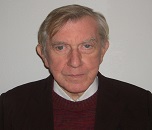
Biography:
Thomas Prevenslik developed a theory of QED based on QM. By this theory, heat absorbed by NPs is deposited almost entirely in their surfaces because of high surface-to-volume ratios. NP atoms are therefore placed under high EM confinement over nano-scale wavelengths that by the Planck law of QM precludes the atoms from having the heat capacity to conserve heat by changes in temperature. Instead, EM confinement converts the surface heat into standing EM radiation inside the NPs, any NP quantum states having lower transition frequencies than the standing EM radiation frequency are indirectly excited with emission to the surroundings. In the instant topic of nanotoxicology, the emission of standing EM radiation at UV levels damages nearby DNA and by scrambling genes establishes the causal link to diverse human health problems.
Abstract:
The causal link between nano-toxicology and human health is proposed to be the scrambling of genes in DNA by UV radiation from NPs heated in the gut upon the ingestion of food. NPs stand for nanoparticles. By classical physics, NPs conserve body heat by changing temperature. QM differs as the Planck law requires the NP atoms have vanishing heat capacity thereby precluding any change in temperature. QM stands for quantum mechanics. Instead, NPs conserve heat by the emission of EM radiation. For heat capacity to vanish; however, the NP atoms must be placed under nanoscale EM confinement. But NPs having high surface-to-volume ratios confine absorbed body heat almost entirely to their surfaces, the surface heat thereby providing the EM confinement of NP atoms over nanoscale wavelengths. QED then conserves the surface heat by creating EM radiation standing between diametrically opposite NP surfaces, but differs from the complex relativistic QED by Feynman and others. Briefly stated: QED conserves heat supplied to a NP absent heat capacity by creating EM radiation having half-wavelength Æ›/2=nd, where n and d are the refractive index and diameter of the NP. For example, QED induces silver NPs having diameter d=90 nm and n=1.35 to emit UVC radiation near Æ›=254 nm - a lethal level for DNA damage, and if the scrambled genes are not repaired by the immune system it may lead to cancer, birth defects, etc. QED does not rely on UV produced by speculative multi-IR photon up conversion as the UVC is directly excited. Figure 1 illustrates the UV emission from a layer of 50 nm silver NPs measured by a UVC light meter. The toxicity of NPs in GM food is briefly discussed. GM stands for genetically modified.
Keynote Forum
Masaki Otagiri
Sojo University, Japan
Keynote: S-nitrosated human serum albumin dimer with superior antitumor activity, long blood retention and excellent EPR effect
Time : 10:00-10:30
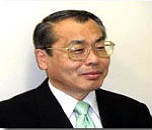
Biography:
Masaki Otagiri is currently a Professor and Dean of Faculty of Pharmaceutical Sciences, Sojo University. He completed his Graduation at Nagoya City University with a PhD degree in 1975. In 1980, he joined Pharmaceutics department, Faculty of Pharmaceutical Sciences, Kumamoto University as an Associate Professor and then promoted to Professor of Bio-pharmaceutics department, Kumamoto University in 1983. After his retirement from Kumamoto University in 2009, he appointed as Professor of Faculty of Pharmaceutical Sciences and Director of DDS Research Institute, Sojo University, Kumamoto.
Abstract:
Recombinant human serum albumin dimer (HSA-dimer) was produced by the yeast Pichia pastoris. HSA-dimer has a longer circulation, compared with HSA-monomer. Thus, HSA-dimer is expected to have an enhanced accumulation in solid tumor via the EPR mechanism due to its large molecular weight (130 kDa). In this conference, we will present a novel DDS system of NO, potential anticancer therapeutic, using HSA-dimer as a carrier, namely, SNO-HSA-dimer. SNO-HSAdimer treatment induced apoptosis of C26 tumor cells in vitro, depending on the concentration of NO. In in vivo experiments, SNO-HSA-dimer was found to specifically deliver large amounts of cytotoxic NO into tumor tissue but not into normal organs in C26 tumor-bearing mice. Interestingly, SNO-HSA-dimer caused a much higher concentration of NOx in the tumor than SNO-HSA-monomer. Moreover, especially, SNO-HSA-dimer has a high level of blood retention. The accumulation of SNO-HSA-dimer in tumor tissue is significantly high compared with SNO-HSA-monomer, suggesting that S-nitrosation of SNO-HSA-dimer further enhanced its EPR effect. Next, we examined whether SNO-HSA-dimer can enhance the activity of other macromolecular antitumor drugs via the augmented EPR effects. As antitumor drugs, we selected N-(2-hydroxypropyl) methacrylamide (HPMA)-zinc protoporphyrin (ZnPP) and doxil. HPMA-ZnPP (mean particle size: 80 nm) forms micelles and doxil has liposomal structure (mean particle size: 90 nm). The tumor growth was significantly inhibited when the two compounds were given simultaneously. The combination of SNO-HSA-dimer inhibited the tumor growth, compared with doxil or SNO-HSA-dimer alone. Furthermore, the combination of doxil and SNO-HSA-dimer significantly reduce the number of lung metastasis. Finally, possible side effects of SNO-HSA-dimer administration were evaluated by measuring blood pressure, heart rate and biochemical parameters. Fortunately, none of these above parameters were significantly affected by repeated administration of SNO-HSA-dimer. Thus, SNO-HSA-dimer strategy is a safe and effective therapeutic approach for improving the antitumor effects of macromolecular drugs.
Keynote Forum
Pavle Radovanovic
University of Waterloo, Canada
Keynote: Tuning plasmon resonance of In2O3 nanocrystals throughout mid-infrared: Dopant, phase, and electronic structure dependence
Time : 10:30-11:00

Biography:
Pavle Radovanovic completed his PhD at University of Washington, Seattle. Following his Post-doctoral studies at Harvard University, he started his independent research career at University of Waterloo in 2006. At Waterloo, he initiated a new research program in Physical-inorganic Chemistry focusing on “The design, synthesis, and fundamental physical and chemical properties of multifunctional low-dimensional materials”. His work has been recognized by number of honors and awards, including Canada Research Chair (NSERC), Early Researcher Award (Ontario Ministry of Research and Innovation), Mobility Award (French Ministry of Foreign Affairs), and CNC-IUPAC Award.
Abstract:
Synthesis, properties, and applications of gold and silver nanostructures with tunable localized surface plasmon resonances (LSPRs) have been a subject of intense investigation over the past decade. The focus on these noble metal plasmonic nanomaterials stems from their facile synthesis, stability to oxidation, and the visible-range LSPR transitions. However, among other drawbacks, these nanostructures are also costly for large-scale applications and exhibit high optical losses. Consequently, doped transparent metal oxide nanocrystals have emerged as a new class of unconventional plasmonic materials. In this talk, author will present the results of our recent work on colloidal indium oxide-based plasmonic nanocrystals. Using size-structure correlation, indium tin oxide (ITO) nanocrystals were prepared in the stable bixbyite (bcc-ITO) and metastable corundum (rh-ITO) phase, revealing a dramatic difference in their optical and electrical properties. Unlike rh-ITO, bcc-ITO nanocrystals exhibit a strong LSPR absorption in the near-infrared region due to the presence of free electrons, enabled by the low activation energy donor states. Author will also discuss colloidal synthesis and spectroscopic properties of two new plasmonic nano crystal systems based on In2O3, antimony and titanium-doped In2O3, and comparative investigation of their electronic structure using combined Drude-Lorentz model and density functional theory. Fundamental understanding of the electronic structure and phase-dependent plasmonic properties allowed us to design and prepare plasmonic In2O3-based nanocrystals tunable throughout the entire mid-infrared region. Application of these colloidal mid-IR plasmonic nanocrystals will also be discussed.
Keynote Forum
Jean-Paul Lellouche
Bar-Ilan University, Israel
Keynote: Surface-engineered tungsten disulfide (WS2) inorganic nanotubes (INTs-WS2) – novel chemically modified nanoscale CNT-replacement inorganic “Nanofillersâ€
Time : 11:20-11:50
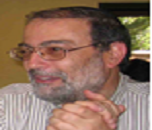
Biography:
Jean-Paul Lellouche leads a laboratory dedicated to Nano-biotechnology and Polymer Science. His current R&D activities include “R&D developments in the materials science field interfacing with nano-biotechnology, i.e., conducting functional polymers; chemically modified hard nanoscale fillers; UV-photo-reactive nano(micro)particles [surface nano(micro)structuration of polymeric coatings, hybrid metallic catalytic particles]; antibacterial organic/inorganic NPs and coatings and; innovative surface modifications of iron oxide (magnetite/maghemite) NPs towards gene silencing (siRNA/microRNA in vitro/in vivo delivery) and anti-parasitic bio-activity”. Recently, he deeply focused on and elaborated various innovative organic chemistry-based methodologies for the development of effective covalent versatile interfacial chemistries towards chemically tailored non-toxic mechanically hard functional inorganic: Tungsten disulfide nanotubes and; tribology-effective fullerene-like tungsten disulfide nanoparticles.
Abstract:
Statement of the Problem: Tungsten disulfide nanotubes (INTs-WS2) and fullerene-like nanoparticles (IFs-WS2) are extremely hydrophobic and chemically inert inorganic nanomaterials, which quite strongly limits their usefulness in numerous mechanical hardness and tribology-relating research developments and subsequent industrial end-applications. Thus, the covalent attachment of any kind of functional organic and/or biology-relating species remains a quite critical developmental step towards highly innovative high-performance nanomaterials and multiphase composites in the field of essential interfacial versatile chemistries.
Methodology & Theoretical Orientation: In this context of highly challenging functionalization issue of these chemically inert hydrophobic nanomaterials, an innovative method of surface functionalization (versatile poly carboxylation – polyCOOH shell formation) of multi-walled inorganic nanotubes (INTs-WS2) and fullerene-like (IFs-WS2) nanoparticles has been successfully developed. This covalent functionalization method makes use of highly electrophilic and reactive ammonium salts (Vilsmeier-Haack (VH) complexes) in order to enable the introduction of a chemically versatile poly acidic (polyCOOH) shell onto the surface of VH-treated inorganic nanomaterials. Moreover, a significant statistical design of experiments (DoE) method has been also involved for global optimization of this multi-parametric poly carboxylation shell generation.
Findings: This INTs-nanotube sidewall polyCOOH-enabling functionalization showed extreme COOH-based chemical versatility for innovative-targeted interfacial chemistries. It enabled the effective fabrication of a wide range of covalent WS2- INTs surface modifications (polyNH2, polyOH, polySH) via polyCOOH chemical activation (EDC, CDI) and 2nd step covalent nucleophilic substitutions by short ï·-aminated ligands H2N-linker-X (X outer surface functionality).
Conclusion & Significance: Resulting fully characterized functional INTs-WS2 (f-INTs-WS2) have a quite wide potential for use as novel functional nanoscale fillers toward new mechanically strengthened and/or conductive composite polymeric matrices (case of hybrid polythiophene-decorated f-INTs-WS2 nano composites, Figure 1). Corresponding novel functional nanomaterials/nanoscale fillers have been also shown to be non-toxic in preliminary toxicity studies, which opens a wide R&D route/progress for relating end-user applications (cellular toxic CNTs nanofillers replacement for example).
Keynote Forum
Leonard F Register
University of Texas at Austin, USA
Keynote: Ensemble Monte Carlo methods and results for nanoscale Si and III-V n-channel FinFETs; non-equilibrium degenerate statistics, quantum-confined scattering and more
Time : 11:50-12:20

Biography:
Leonard F Register completed his J. H. Herring Centennial Professorship in Engineering within Electrical and Computer Engineering department at University of Texas at Austin. He is a member of Microelectronics Research Center; Fellow of Institute of Electrical and Electronics Engineers (IEEE) and; Fellow of the American Physical Society (APS). He is a Device Theorist whose research is focused on “Understanding and modeling nano-scale electronic and mageto-electronic devices and the essential physics underlying their operation”. His current research interests include “Alternative materials and device geometries for CMOS; alternative materials, state variables and switching methods for beyond CMOS devices and memory; and quantum transport and quantum-corrected semi-classical transport”.
Abstract:
Particle-based ensemble semi-classical Monte Carlo (SCMC) remains a benchmark in semiconductor device research, because of combination of relative computational efficiency, first-principles transport physics, and the ready ability to model scattering. The latter contributes not just to injection efficiencies, but screening of potential wells, thermalisation of carrier distributions (particularly among energy valleys), and source drain-resistance. However, particle-based ensemble semi-classical Monte Carlo (MC) methods must employ quantum corrections (QCs) to address quantum confinement and degenerate carrier populations to model today's and tomorrow’s ultra-scaled MOSFETs. We describe the most complete treatment of quantum confinement effects and carrier degeneracy in a three-dimensional (3D) MC device simulator to date, and apply them to simulation of n-channel Si and III-V FinFETs. Far-from-equilibrium degenerate statistics (beyond hot Fermi distributions), QC-based modeling of surface-roughness scattering, quantum-confined phonon and impurity scattering are considered, in addition to quantum confinement-induced redistribution of charge carriers in real-space and momentum-space. The use of fractional “subcarriers” also minimizes classical carrier-carrier scattering that is incompatible with degenerate statistics, as well as providing improved statistics. FinFET simulations illustrate the contributions of each of these QCs. We show how collectively these modeled quantum effects can substantially reduce and even eliminate otherwise expected benefits of a considered In0.53Ga 0.47As FinFET over Si but otherwise identical Si FinFET, despite lower bulk electron masses and higher mobilities and thermal velocities in In0.53Ga0.47As, as illustrated in Fig. 1.
Keynote Forum
Yoshinori Sato
Tohoku University, Japan
Keynote: Defluorination-assisted nanotube-substitution reaction with ammonia gas for synthesis of nitrogen-doped single-walled carbon nanotubes
Time : 12:20-12:50

Biography:
Yoshinori Sato completed his Bachelor and Master degrees in Materials Science and Engineering at Yamagata University, Japan, in 1994 and 1996, respectively, and PhD in Graduate School of Engineering at Tohoku University, Japan, in 2002. In 2004, he joined the Graduate School of Environmental Studies, Tohoku University, as an Assistant Professor, and in 2010 became an Associate Professor. He joined the Institute for Biomedical Sciences, Interdisciplinary Cluster for Cutting Edge Research, Shinshu University, Japan, as a specially approved Visiting Professor, in 2014. His current research interests include “Defect engineering of carbon nanotubes”. He is an Editorial Board Member of Scientific Reports (Nature Publishing Groups). He is a regular member of the American Chemical Society (ACS), the Materials Research Society (MRS), and the Electrochemical Society (ECS).
Abstract:
Nitrogen doping of single-walled carbon nanotubes (SWCNTs) plays a significant role as advanced functional materials. The methods of nitrogen doping are classified into two categories: Direct-synthesis doping and post-synthesis doping. Although a number of direct-synthesis nitrogen doping methods for SWCNTs have been studied, it is hard to control the number of nitrogen atoms and retain the crystallinity of nanotube framework. In contrast, little post-synthesis doping has been reported until now. In addition, these methods require high temperature (>1000 K), and the nitrogen contents of the resulting samples were low (<1.0 at.%). These are considered to be due to the low reactivity of SWCNT surface. Here, we report a new facile method to synthesize nitrogen doped SWCNTs by the reaction of fluorinated SWCNTs (F-SWCNTs) with ammonia gas. F-SWCNTs were prepared by fluorination of highly crystalline SWCNTs (hc-SWCNTs) synthesized by a direct current arc discharge, using a mixture of F2 (20%) and N2 (80%) gases. The F-SWCNTs placed into a reactor tube reacted with flowing a mixture of NH3 (1%) and N2 (99%) gases at the temperature range of 573-873 K for 30 min. The resulting samples were characterized using X-ray photoelectron spectroscopy (XPS), high-resolution transmission electron microscopy (HRTEM), and Raman scattering spectroscopy. The XPS survey spectra of the samples after ammonia gas reaction revealed that nitrogen atoms were introduced into the SWCNTs at all reaction temperatures, and the maximum nitrogen content was estimated to be 3.0 at.% at 673 K. The XPS spectra of N1s region showed the SWCNTs had pyridinic, pyrrolic, and graphitic nitrogen atoms. Structural and electrochemical properties in this presentation will be discussed in detail.
Keynote Forum
MarÃa E Dávila
Instituto de Ciencia de Materiales de Madrid - ICMM - CSIC, Spain
Keynote: Novel silicon nano-objects
Time : 12:50-13:20

Biography:
María E Dávila research focuses on “The synthesis and characterization of low-dimensional materials with special emphasis on semiconductors”. Her interests include “Determining the structural and electronic structure of those materials”. She has expertise in “The use of synchrotron radiation techniques to explore the physics and chemistry of low-dimensional materials”. She completed her PhD in Condensed Matter Physics at University Auronoma of Madrid in 1996, followed by a Post-doctoral fellowship at University of Uppsala and KTH in Sweden.
Abstract:
The discovery of the formation of (OD) silicon nano-dot and (1D) silicon nano-ribbons (SiNRs) on Ag(110) was first reported in 2005. Silicon nano-dot are the smallest form of silicon nano-structures that exploit properties of quantum dots to localize magnetic or electrical fields at very small scales and the nano-ribbons are unique form of silicon grown by direct synthesis (in our case are silicon’s stripes grown along the substrate’s surface Ag(110) with ultra-thin width (<50 nm) following the bottom-up approach that could be assembled into functional devices. The first step in this aproach is the synthesis and characterization of this form of nano-silicon and the study of their chemical, physical and structural properties. To explore the potential of one-dimensional (1D) silicon nanoribbons SiNRs, it is important to control and vary their structure in terms of length, orientation and diameter, that could modify their electronic properties. In this talk, we will first focus on the synthesis and structural characterization of the Si nano-dot and SiNRs, and then on their fundamental properties and also their functionalization and reactivity. Finally, we will describe possible applications of the SiNRs on nanoelectronic devices.
Keynote Forum
Nathalie Raveu
LAPLACE - Centre National de la Recherche Scientifique, France
Keynote: Metamaterial device design with the extended modal theory
Time : 13:50-14:20
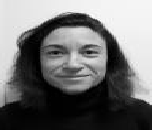
Biography:
Nathalie Raveu completed her MS degree in Electronics and Signal Processing in 2000 and PhD in 2003. She is a Professor at National Polytechnic Institute of Toulouse and Research Fellow at LAPLACE-CNRS (Laboratory of Plasma and Energy Conversion). Her research topics are oriented toward development of efficient numerical techniques to address innovative microwave circuits. During the last years, she has developed a new method for SIC’s study, metamaterial horns and plasma cavity.
Abstract:
Metamaterial device simulation often requires full-wave analysis which implies high memory storage. The computer capacity is sometime not sufficient to solve the problem. To overcome this problem, homogenization techniques may be applied, the results are generally obtained faster. However, the method accuracy may be contested since the results are strongly dependent on the proposed approximations. For waveguide and horn antenna analysis, the extended modal theory (EMT) has been developed. This method is based on metamaterial representation by surface impedance that is dependent on frequency, incidence angle and mode order. They can be isotropic or anisotropic but are independent of the position on the surface. These impedances are then introduced in an analytical dispersion equation to get the propagation constant and consequently the electromagnetic field formulation. The EMT result accuracy is compared successfully to full-wave analysis with computation time reduction. Based on this EMT, a new design methodology is proposed. Firstly, dispersion diagram and field cartography are determined for fixed surface impedances (in frequency and incidence angle). Surface impedance ranges are determined with regard to these results. Then, metamaterials are optimized to satisfy these ranges. Reduced crosssection waveguide with metamaterial walls has been designed (30% smaller than conventional metallic waveguide) with comparable performances (cut-off frequency, fields repartition) thanks to this methodology. First interesting results are also noticed on opened-waveguide antenna performances. The presented designs have been done in rectangular waveguide, circular waveguides are under investigation.
Keynote Forum
Claire Deeb
Centre de Nanoscience et de Nanotechnologies, France
Keynote: Electrically driven nanogap optical antennas
Time : 14:20-14:50

Biography:
Claire Deeb is a Research Scientist at Centre de Nanoscience et de Nanotechnologies (C2N), France where she conducts research in the field of Optics, Active Plasmonics, and Nanophotonics. She has an international experience through working at prestigious Argonne National Laboratory (ANL, USA) and at outstanding Northwestern University, where she was specialized in “Advancing plasmon nano laser sources, investigating energy transfer processes at the nanoscale, and exploiting the characteristics of single nano-objects”. She has also developed expertise in Nanofabrication, Nano-characterization, Optical Spectroscopy, and Near-Field Imaging. She has initiated and maintained collaborations with several leading groups at UC-Berkeley and Ludwig Maximilian University of Munich and has led many international projects. She has supervised two PhD theses, has given eight invited talks, and has published over 13 influential papers and one book chapter. Additionally, she has received two PhD awards and is serving the scientific community as an Editor of Progresses in Nanotechnology and Nanomaterials.
Abstract:
Gaps formed between metal surfaces control the coupling of localized plasmons, thus, allowing gap-tuning targeted to exploit the enhanced optical fields for different applications. Classical electrodynamics fails to describe this coupling across sub-nm gaps, where quantum effects become important owing to non-local screening and spill-out of electrons. The advantages of narrow gap antennas have mostly been demonstrated for processes like SERS that are excited optically, but promising new phenomena appear when such antennas are fed by electric generators. However, the extreme difficulty of engineering and probing an electrically driven optical nanogap antenna has limited experimental investigations of physical concepts at stake in these conditions. The feasibility of structuring electron-fed antennas as nano-light sources has been recently demonstrated; however, this configuration remains very limited. Too much power was lost as heat when operating the optical antenna, and the antenna operation time was limited by the structure lifetime to sustain a bias voltage for a few hours. The innovative structure that we suggest here will cope with all these limitations: ALD dielectric materials substitute the air gap to improve the antenna stability; a quantum efficiency of 10-1 is targeted owing to a significantly efficient antenna (two orders of magnitude higher field enhancement). The resulting source will operate at room temperature and have a tunable spectral response (ranging from visible frequencies to THz regime) defined by the antenna geometry and the applied bias. Also, this source will be compact, Si- compatible, and will not request specific emitting materials (e.g. III-V semi-conductors) to operate.
Keynote Forum
Guy Makov
Ilse Katz Institute for Nanoscale Science and Technology, Israel
Keynote: A novel nanometric cubic phase in monochalcogenide semiconductors – theory and experiment
Time : 14:50-15:20
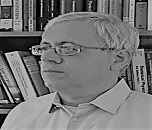
Biography:
Guy Makov is an Associate Professor of Materials Engineering at Ben-Gurion University of the Negev and his research interests is in Materials Physics. He has ompleted his BSc in Chemistry; PhD in Chemical Physics at Tel Aviv University and Post-doctorate in Computational Materials Physics at Cambridge University and FZ Julich. His research aims to understand materials behavior under extreme conditions of size, temperature and pressure from a physical viewpoint, in particular electronic structure, equilibrium properties and response to mechanical deformations or irradiation. His areas of specific interest include semiconductor nanoparticles and the liquid state, phase diagrams, dislocations, defects and microstructure in metals.
Abstract:
A new nanometric cubic binary phase has been synthesized in the tin monoselenide and monosulfide systems, π-SnSe, π-SnS, as cube shaped nanoparticles. This new phase has unusual structural properties reflected in a large, 64-atom unit cell and promising optical properties due to the larger band gap and non-centrosymmetric structure of the crystal. It is also environmentally advantageous. This exciting discovery has already led to the publication of over 25 studies in less than 2 years. However, interpretation of the structure, bonding, stability and electronic properties has proven challenging. By introducing by ab-initio density functional calculations the structure, atomic positions and band gaps of these phases were determined and found to be in very good agreement with experimental measurements. Advanced theoretical studies including density functional calculations of the phonon spectrum that determined these phases to be mechanically stable and energetically close to competing structures such as rock salt and orthorhombic. Furthermore theory predicts that the monochalcogenides will exhibit other, as yet experimentally undiscovered, novel phases with promising properties. This study overview the latest results of our calculations and experimental studies.
- Nanoscience and Technology | Nano Medicine | Nano Toxicology | Nanophotonics | Nano Composites | Nano Fluidics | Nanotechnology in Agriculture and Food Industry
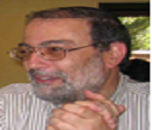
Chair
Jean-Paul Lellouche
Bar-Ilan University, Israel
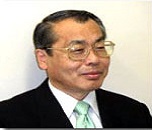
Co-Chair
Masaki Otagiri
Sojo University, Japan
Session Introduction
Manfred George Krukemeyer
Paracelsus-Hospital Osnabrueck, Germany
Title: Nanotechnology in liver cancer
Time : 15:20-15:40

Biography:
Manfred George Krukemeyer completed his study of Medicine at University of Vienna, University of Kiel and University of Bonn, Germany. He completed his Resident of Surgery in 1991. He is a board approved certified Surgeon, Emergency Medicine Physician and Nutritionist. His research focuses on Oncology, Nanomedicine and Transplantation. He has more than 50 publications.
Abstract:
Therapies of liver tumors display diverse treatment alternatives. The administration of cytostatic coupled with and without iron oxides (Fe3O4) has been presented in an experimental series with 36 animals with prior implantation of an R1H rhabdomyosarcoma in the liver, since iron undergoes selective phagocytosis in the liver. In group I, mitoxantrone is injected into the lateral tail vein of the animals (n=12) in a dosage of 1 mg/kg of body weight. Group III (n=12 animals) received mitoxantrone coupled with iron oxide (Fe3O4), and group II (n=12 animals) received NaCl, in the same dosage for all groups. In the sonography and in the measurement of the volume, a significantly smaller tumor growth is found in group II compared with group I and III. The volume was measured manually postmortally in mm3 (length x breadth x height). The tumor volume showed the lowest growth in group II, which was treated with mitoxantrone-coupled iron oxides. Three animals from group II died. The autopsy revealed no indication of the cause of death. There were neither thromboses nor allergic reactions in any of the animals. It can be clearly seen that group I has a smaller mean volume and less scatter than group II. The mean of group I is below group II.
Claudia Cabella
Bracco Imaging SpA, Italy
Title: Probing atherosclerotic plaque permeability using fluorescent blood pool agents in ApoE(-/-) mouse model
Time : 15:40-16:00

Biography:
Claudia Cabella completed her Graduation in Chemistry and PhD in Biochemistry. Since 2001, she works at Centro Ricerche Bracco (CRB, Bracco Imaging SpA) being involved mainly in the field of Magnetic Resonance Imaging and Optical Imaging. Her main skills are preparation of cell cultures and related tumoral animal models and use of MRI and OI scanners. She worked on MRI and OI projects focused on tumoral targeting with different paramagnetic and fluorescent probes and in particular, she worked as a partner in the European research project NanoAthero on a specific task aimed at identifying blood pool agents for atherosclerotic plaque stratification.
Abstract:
Introduction: Atherosclerosis is a progressive disease characterized by accumulation of lipids and fibrous elements in the large arteries, causing the formation of atherosclerotic lesions. With the progression of the disease, plaques can become increasingly complex, showing different elements of dangerousness as thin fibrous cap, lipidic necrotic core, ulcerations at the luminal surface and haemorrhages. Currently, several imaging techniques are able to identify plaques in humans but not to clearly define composition as a predictor of an acute event, causing difficulties on the definition of a proper treatment. In particular, a diagnostic tool aimed to stratify plaques with respect to different permeability (i.e. different dangerousness) could help clinicians to predict the response to a drug-loaded nanosystem based therapy.
Aim: The aim of this study was to investigate the plaque endothelial local permeability in the ApoE-/- mouse model with optical imaging using fluorescent blood pool agents.
Methods: A human serum albumin conjugated with Cy5 (HSA-Cy5) and an albumin binder conjugated with IrDye800 (B26170) were administered to ApoE-/- mice at different weeks of feeding with high fat diet. Arterial trees were removed, imaged with a fluorescence microscope system and then histologically processed.
Results & Conclusions: Plaques developed in different districts of the arterial tree were classified through a grading index (between one and three) with respect to their morphology and displayed higher macrophage content at the early stage of development. Both the fluorescent probes showed higher permeation in early plaques than in more advanced ones, thus correlating with a high inflammatory state. The proof of concept that nano-based systems are able to probe permeability of atherosclerotic plaques, defining which ones are suitable for an anti-inflammatory therapy based on drug-loaded nanoparticles, was reached through OI and could be relatively easily translated in a clinical tool for MRI with the use of a proper Gd-based blood pool agent.
Akbar S Khan
Defense Threat Reduction Agency, USA
Title: Nanotechnology: Applications and risks
Time : 16:15-16:35
Biography:
Akbar S Khan has completed his PhD at University of Oklahoma, USA and Post-doctoral studies at University of Colorado School of Medicine at Denver, USA. He is the Senior Scientist, Program Director and Policy Advisor for a Defense Threat Reduction Agency linked with Pentagon and Office of Secretary of Defense. He has published more than 75 manuscripts in top journals including Science and Nature, six patents and has been serving as an Editorial Board Member of Journa of Microbiology and Experimentation and Global Security: Health, Science and Policy.
Abstract:
Nanotechnology is science, engineering, and technology conducted at the nanoscale, which is about 1 to 100 nanometers. All things, both living and non-living, are constructed of atoms. The nano-scale sparks so much interest because when a substance is artificially created, structured atom by atom; it can have different or enhanced properties compared with the same substance as it occurs naturally, which includes increased chemical reactivity, optical, magnetic, or electrical properties. Nanotechnologies aim to exploit these properties to create devices, systems, and structures with new characteristics and functions. For example, researchers hope to construct from the very bottom (that is to say, atom by atom) a substance as strong as diamond, but more flexible and far less expensive. It would also be possible to manufacture a substance in the shape and size needed such as a thin string as strong as steel. So far, nanotechnology is applied in various areas: Applied design a water filtration system on the nano-scale that is so efficient, it only lets water molecules through it; used to create filters and sensors to screen out toxins or adjust flavors, and packaging to sense when the food inside is spoiling and alert the customer; the ability to assemble nano-scale particles that could be targeted at certain parts of the body or certain viruses in the blood; economical solar cells to make solar power economical and diminish our dependency on coal, oil, nuclear fuel and fuel wood and; to clean up the environment. To clean up oil spills, imagine a scrubber built from tiny nanotubes that could manipulate the atoms in an oil spill to render it harmless. Just like any new technology, there are varieties of health, environmental and safety risks to this technology from free rather fixed manufactured nanoparticles. In initial studies, manufactured nanoparticles have shown toxic properties. They can enter the human body in various ways, reach vital organs via the blood stream, and possibly damage tissue. Due to their small size, the properties of nanoparticles not only differ from bulk material of the same composition but also show different interaction patterns with the human body. These promises and challenges of nanotechnology will be presented here.
Giulio Sancini
University of Milano-Bicocca, Italy
Title: The fantastic voyage of nanoparticles targeting Aβ
Time : 16:35-16:55

Biography:
Giulio Sancini is an Assistant Professor of Human Physiology and Specialist in Applied Pharmacology. He has focused his research activity mainly on Neurosciences, Nanomedicine, and Nanotoxicology. His research has been funded by European FP7 (NAD Project, Nanoparticles for diagnosis and therapy of Alzheimer’s disease and FP6 (BONSAI project, Bio-imaging with Smart Functional Nanoparticles). He has published more than 45 papers in reputed journals and has been serving as an Editorial Board Member of repute. He is Head of the Physiology Unit in Department of Medicine and Surgery at University of Milano-Bicocca.
Abstract:
Pharmacological treatment of brain diseases is still a difficult task. Many potential therapeutic compounds fail to reach their molecular targets in the brain parenchyma limiting the development of clinically relevant therapeutics. Indeed the concentration of therapeutic compounds into the brain parenchyma depends on various factors but it is clear that the capability to cross the blood brain barrier (BBB) is of paramount importance. The difficulties encountered in the treatmen of brain disease with conventional pharmacological tools have created the need for alternative and innovative strategies. Nanotechnology-based approaches might improve the unfavorable pharmacokinetic of molecules unable to overcome the BBB. Recent applications in nanomedicine focus on nanoparticles (NP) as they are promising tools for site-specific delivery of drugs and diagnostic agents, through the possibility to functionalize their surface with target-specific ligands. Treatment options for Alzheimer’s disease (AD) are limited because of the inability of drugs to cross the BBB. Previously, we showed that intraperitoneal administration of liposomes functionalized with phosphatidic acid and an ApoE-derived peptide (mApoEPA-LIP) reduces brain beta-amyloid (Aβ) burden and ameliorates impaired memory in AD mice. Among the different administration routes, pulmonary delivery is a field of increasing interest not only for the local treatment of airway diseases but also for the systemic administration. We investigated lung administration as an alternative, non-invasive NP delivery route for reaching the brain. Our results show that mApoE-PA-LIP were able to cross the pulmonary epithelium in vitro and reach the brain following in vivo intratracheal instillations. Lung administration of mApoE-PA-LIP to AD mice significantly decreased total brain Aβ (–60%; p<0.05) compared to untreated mice. These results suggest that pulmonary administration could be exploited for brain delivery of NP designed for AD therapy.
Isabel Montero
Instituto de Ciencia de Materiales de Madrid - ICMM - CSIC, Spain
Title: Secondary electron emission from carbon nanoparticles by electron impact
Time : 16:55-17:15

Biography:
Isabel Montero is currently a Professor at Spanish National Research Council (CSIC), Madrid, Spain. She is the Head of Group Surface Nano-structuring for Space and Terrestrial Communications, Materials Science at Institute of Madrid (ICMM-CSIC), Madrid. She is also Director of Spanish Laboratory on secondary electron emission, CSIC.
Abstract:
The secondary electron emission yield (SEY) from materials used in vacuum in high-power RF devices in space missions is the feedback mechanism of the resonant discharge of electrons or multipactor discharge. The maximum work power of those RF systems is unavoidably limited by this effect. Here, we report low-secondary electron emission yield from mixtures of powdered graphite, graphene and carbon nanowires. The samples were tested for SEY, scanning probe microscopies and X-ray photoemission spectroscopy analysis. Insertion and reflection losses measurements of carbon nanoparticles coated RF filters are also critical measurements to analyze the influence of the anti-multipactor coating on the performance quality. Thus, while skin depth at 12 GHz for a typically used material in space borne devices like silver is around 600 nm, coatings of les than 10 nm thickness have demonstrated an improved system overall performance. This is because despite the superior coating materials’ resistivity compared to silver, with its inherent worsening on RF losses, the extremely thinness of the covering layer make that worsening almost negligible, meanwhile SEY properties clearly move on the right direction (Fig.1). The SEY experiments were performed in an UHV chamber also equipped with XPS for surface analysis. The SEY was measured over the primary electron energy range of 0 to 1000 eV. The shape of the SEY curve as a function of primary energy seems to be the inverted image of the typical universal SEY curve. The effect of point sources exhibiting low threshold electron emission due to local field enhancement at the oxidized tip emitters was reduced because the roughening the surface leads to lower secondary electron yields. It was achieved that the emitted secondary electrons are reduced to 70%.
Tomer Zidki
Ariel University, Israel
Title: Reactions of radicals at nanoparticles surfaces
Time : 17:15-17:35

Biography:
Tomer Zidki has completed his PhD in 2009 at Ben-Gurion University of the Negev and has his expertise in “Mechanistic studies of catalytic reactions at nanoparticles surfaces”. His studies show that radicals react extremely fast with metal and supported metal nanoparticles. The products of these reactions are long-lived metalcarbon intermediates in which their lifetime depends on the metal nature. He also has interest in “Catalytic water splitting reactions” and developed very efficient water oxidation catalysts based on co-hydrous-oxide nanoparticles supported on SiO2 nanoparticles. Recently, he developed new metal-alloys nanoparticles which show superior catalytic activity as well as TiO2 based nanocomposites which will be used for various catalytic and photocatalytic reactions.
Abstract:
Radicals reactions are of importance due to their formation near surfaces in a variety of processes, e.g. in catalytic processes, in electrochemistry, in photo-catalytic processes, in environmental processes, etc. It was therefore decided to study the mechanisms and kinetics of reaction of M°-NPs, M=Ag; Au; Cu; Pt; Pd, Pt/Au-alloy-NPs and TiO2-NPs with methyl radicals. (All the M°-NPs were prepared by reduction of the corresponding salts with NaBH4). These reactions are very fast, approaching the diffusion-controlled limit, forming long-lived transients with (M°-NP)-(CH3)n σ bonds. These transients decompose yielding C2H6 for Ag°-, Au°- and TiO2-NPs, CH4 for Cu°-NPs, for Pt°- and Pd°-NPs most methyl remain bound to the NPs, and are released as methane when H2 is added to the suspension, though some C2H6, C2H4 and oligomerization products are formed. The reaction of .C(CH3)2OH radicals with SiO2 supported metal-NPs (M°-SiO2-NCs, NCs=nanocomposites) is more complicated. At low [M°-SiO2-NCs], the NCs catalyze the reduction of water by these radicals, for M=Pt the NCs are clearly a catalyst while the Pt°-NPs are not; For M=Ag the NCs catalyze the reduction of water but considerably less than the Ag°-NPs; for M=Au both the MPs and the NCs catalyze the reduction of water. At high [M°-SiO2-NCs] the reduction of water is considerably decreased and at high doses of radicals the Pt°- and Ag°-NCs do not catalyze the reduction of water by the .C(CH3)2OH radicals and induce their disproportionation, and their reduction by H2, on the NCs surfaces. Thus, the SiO2 support affects considerably the properties of the M°-NPs and the nature of this effect depends on the nature of the M°-NPs.
Modan Wu
Dublin Institute of Technology, Ireland
Title: Preparation and characterization of prednisone and ciprofloxacin double layerloaded chitosan nanoparticles for oral delivery
Time : 17:35-17:50

Biography:
Modan Wu is currently pursuing her PhD in Department of Physics at Dublin Institude of Technology, Ireland. Currently, she is working in the area of Nanotechnology with a focus on “Double encapsulation chitosan nanoparticle preparation, chitosan nanoparticle surface modification and antibacterial abilities”.
Abstract:
Crohn’s disease (CD) is a chronic inflammatory bowel disease that presents as discontinuous transmural inflammation in any portion of gastrointestinal tract. Currently, there is no cure for CD, drug treatment typically prioritizes reducing the inflammation that triggers the symptoms, improving long-term prognosis by limiting associated complications. The predominant form of treatment is a combination of anti-inflammatory and immune system suppresser drugs, in addition to antibiotics such as prednisone (PD) and ciprofloxacin (CPX). In this study, double-layered chitosan (Cs) nanoparticles (NPs) were formulated through crosslinking with tripolyphosphate (TPP) in the presence of PD and CPX via ionotropic gelation method. The physicochemical properties (size and zeta potential) of the nanoparticles were determined by dynamic light scattering, and morphology through scanning electron microscopy. Firstly, PD was encapsulated within the Cs nanoparticle matrix, with average sizes presenting at 150-200 nm, followed by secondary coating with CPX which gave rise to final nanoparticle sizes of 350-450 nm. The maximum drug encapsulation efficiency (EE %) for PD and CPX was 20% and 70%, respectively. EE% was found to be affected by the drug loading concentration, pH value and ratio of chitosan to TPP. The optimal ratio between chitosan and TPP is 3. Release studies on the optimum formulations showed that 30% of CPX released after 3 h on incubation in simulated gastric fluid (SFG, pH 1.2) followed by 60% after 20 h in simulated intestinal fluid (SIF, pH 6.8). The antibacterial activity of PD: CPX loaded NPs and native PD and CPX were assessed against E. coli and S. aureus via zone inhibition, minimum inhibitory concentration and minimum bactericidal concentration (MBC). The results showed that PD: CPX loaded Cs NPs could inhibit the growth of various bacteria tested. Live/dead staining flow cytometry was used as an alternative to traditional MBC assay to confirm the bactericidal nature of NPs.
Kepsutlu Burcu
Helmholtz-Zentrum Berlin, Germany
Title: The cytoplasmic escape pathway of polyethylenimine coated nanoparticles is altered by changing the nanoparticle concentration
Time : 17:50-18:05

Biography:
Kepsutlu Burcu is a PhD student and has her expertise in “Evaluation of morphological and functional effects of biologically relevant nanoparticles on cells via X-ray tomography”. With this technique, she showed that nanoparticles induce a significant remodeling of cellular organelle composition within non-apoptotic cells. She also utilized this relatively beneficial technique to track nanoparticle distribution within individual organelles and define the endocytosis pathway of nanoparticles. She found out that nanoparticles are localized in lipid droplets which may be the reason for nanoparticle localization within liver. She also found out that multivesicular bodies may exist without a limiting membrane. All these findings provide invaluable knowledge in the drug delivery field and can be utilized for investigation of different types of drugs with cells.
Abstract:
Polyethylenimine (PEI) is commonly utilized as a non-viral gene delivery vector because it destabilizes vesicle membranes enabling release of genes to their site of action in the cytoplasm or nucleus. However, the precise mechanism of cytoplasmic release remains unclear. Possibilities include either pore formation or vesicle rupture of either endosomes or lysosomes. Identifying the escape route is critical because lysosomes have digestive enzymes which may impair the gene once inside, and furthermore release of lysosomal contents to the cytoplasm can be detrimental to the cell. To investigate cytoplasmic escape of PEI, we utilized X-ray tomography which can monitor 3D volumes of vitrified cells at 40 nm spatial resolutions without chemical fixation, staining or slicing. With this technique, we find that the mechanism of PEI-nanoparticle (PEI-np) escape to the cytoplasm is concentration dependent. At standard concentrations, PEI-np escapes by rupturing lysosomes. This release mechanism is relatively inefficient with limited nuclear entry of PEI, and with most PEI-np encapsulated within endosomes. Furthermore, we observe morphological signs of apoptosis such as extended mitochondria and chromatin condensation. However, at a ten-fold lower concentration of PEI-np, we detect no ruptured lysosomes and no PEI-np within lysosomes, and importantly we find a higher efficiency of escape to the cytoplasm and nucleus. At these concentrations, we find no mitochondrial elongation and significantly reduced chromatin condensation. In sum, simply by reducing the PEI-np concentration, it appears that PEI-np are directed to a different pathway in which lysosomes are not ruptured, endosomal escape and nuclear entry are more efficient and the adverse effects of PEI-np are reduced. Our results suggest that lower concentrations of PEI-np have multiple benefits for cellular gene delivery.
Alexis Gonon
Institute of Advanced Biosciences-University Grenoble Alpes, France
Title: Functions of antigen presenting cells can be altered by gold nanoparticles exposure
Time : 18:05-18:20
Biography:
Alexis Gonon is a 3rd year PhD student at Institute of Advanced Biosciences (IAB) of Grenoble, France. After a Bachelor degree in Biology at University Joseph Fourier, he completed his Master’s degree in Animal Genetics at Paris Diderot University. He has expertise in Mouse Experimentation at Pasteur Institute, France. He is involved in partnerships between IAB and several French and international companies of nanomedicine to test immune safety of these new innovative drugs.
Abstract:
Gold nanoparticles (AuNP) are increasingly used for therapeutic and diagnostic applications. Due to their small size (<200 nm), NP can increase the diffusion and effectiveness of drugs while facilitating modes of administration. Nevertheless, the potential risks for human health associated to NP exposure remain poorly documented especially about their effects on the immune system. Antigen presenting cells (APC), such as macrophages and dendritic cells, participate in the maintenance of body integrity, engulfing foreign pathogens and delivering signals to other components of the immune system. In this study, we investigated whether these functions could be altered by NP exposures. Using the macrophage cell line J774 and primary bone marrow derived dendritic cells, we have demonstrated that AuNP highly accumulate in APC. Notably, this accumulation did not alter phagocytosis capacity of macrophages. Then, analyzing expression of surface markers CD-86 and MHC-II, we established that NP exposure did not activate bone marrow derived DC. Moreover, further activation of these cells by known activators such as bacterial lipopolysaccharide (LPS) was not impaired by NP. However, in this case, the cytokine response was altered, showing reduced inflammatory cytokine production such as IL-6, IL-12 and IL-23. In a model of antigen presentation in vitro, this cytokine profile resulted into an altered development of specific immune responses. AuNP exposure led to an increase in T cell specific cytokines: IL-13 and IL-4 (indicating a shift of classical Th1/Th2 balance towards Th2) and IL-17 (standing for an alteration of T-cell fate towards Th17). All together, these results demonstrated that NP did not alter phagocytosis and DC activation. However, these NP changed cytokine responses after such activation, leading specific T cell fate towards Th2 and Th17 phenotypes. These modifications could impair the immune system physiology and contribute to chronic diseases or autoimmunity.
